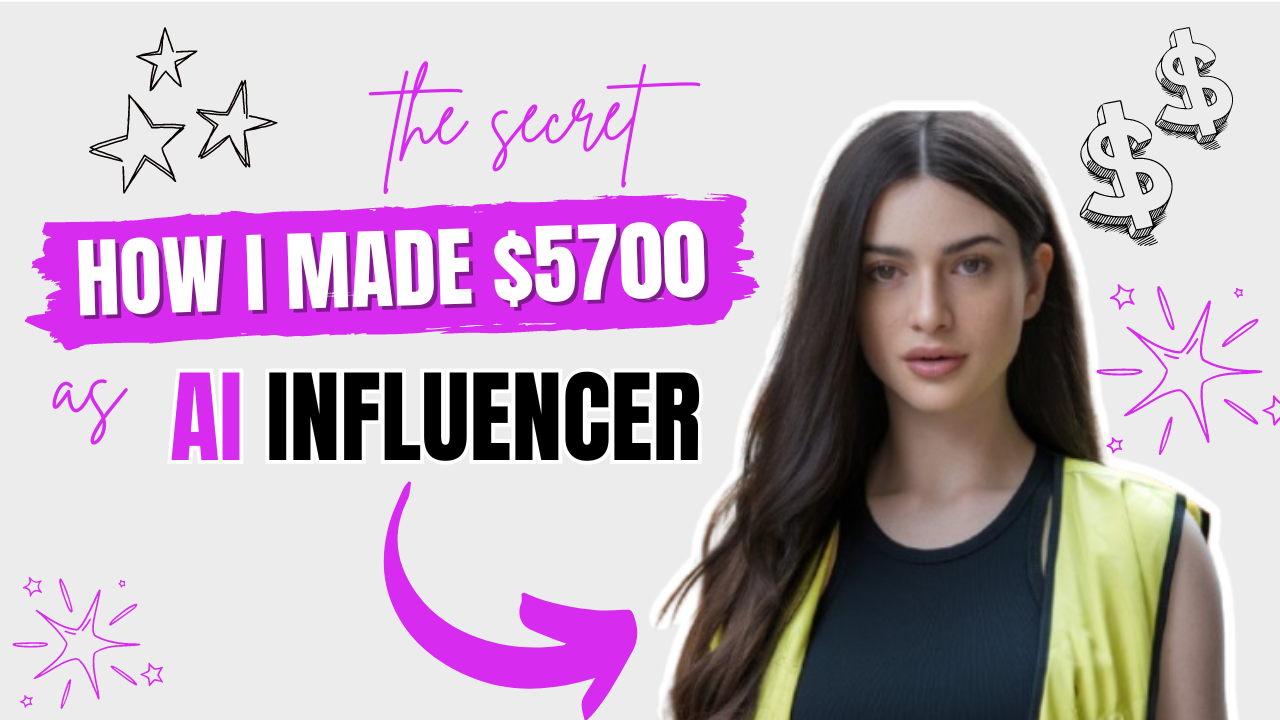How I Made Money as an AI Influencer
Created on 10 October, 2024 | AI Tools | 61 views | 3 minutes read

Discover my journey into the world of AI influencers, exploring the technology and monetization strategies behind this emerging
In the age of social media, influencers have transformed marketing strategies, making it possible to earn a living through engaging content. Enter the realm of AI influencers—computer-generated personas that have taken this trend to a whole new level. In this article, we’ll delve into my journey of creating an AI influencer, exploring the technology behind it, and discovering whether it’s a viable side hustle.
Understanding AI Influencers
What is an AI Influencer?
AI influencers are virtual models created using artificial intelligence. Unlike traditional influencers, who are real people, these digital entities are generated through algorithms, allowing them to maintain a flawless image and aesthetic. The appeal of AI influencers lies in their consistency, uniqueness, and ability to attract followers without the complications that human influencers often face.
The Allure of AI Influencers
Recent reports highlight the profitability of AI influencers, with creators like "Itana" earning significant sums monthly. According to a Forbes article, her creators make around $11,000 per month simply by posting AI-generated images. This reality sparked my interest and set the stage for my experiment.
1-The Challenge Begins
Choosing the Right Tools
To kick off my experiment, I needed a reliable AI art generator. I opted for Stable Diffusion XL, an open-source platform praised for producing high-quality images without the limitations of paid applications like MidJourney or DALL-E. While these paid platforms are user-friendly, they often come with strict content guidelines and a subscription fee.
Installing Stable Diffusion The installation process was surprisingly straightforward. After navigating to the GitHub page and downloading the necessary files, I ran the script to set everything up. While the file size was substantial (nearly 2 GB), it was worth it for the quality it promised.
Generating the AI Influencer
My first task was to generate images for my influencer. I used the same prompts and settings outlined in a tutorial I found on YouTube, which detailed how to create consistent, high-quality images. However, I quickly discovered that the rendering process took significantly longer than expected—about nine minutes for just two images.
Despite the wait, the results were impressive, showcasing the potential of using AI-generated images as a foundation for a successful influencer persona.
2-Building the AI Influencer
Developing the AI Model
With the initial images created, it was time to finalize the look of my AI influencer. After researching existing AI influencers, I realized the importance of having a distinctive appearance. I decided to create a model with striking red hair, aiming for a unique aesthetic that would stand out in the crowded influencer space.
Generating a Unique Identity The next phase involved fine-tuning my influencer’s features. I spent considerable time refining prompts to create a compelling character. While the process was time-consuming—sometimes taking over 20 minutes per image—the outcome was worth it. I crafted a persona that appeared both realistic and engaging.
Setting Up an Instagram Account
Creating an Instagram profile for my AI influencer was the next logical step. I used ChatGPT to brainstorm names, ultimately settling on Alexis Ray. The simplicity and catchiness of the name made it memorable.
Once the profile was established, I began posting content. Recognizing the trend of using video montages in addition to static images, I created my first Instagram Reel. Using free editing tools like Canva, I assembled a vibrant photo montage that showcased Alexis in various outfits.
3-Content Creation and Engagement
Posting Strategy
As the experiment progressed, I maintained a consistent posting schedule. Over three weeks, I aimed to produce engaging content that would attract followers and interaction. My strategy involved a mix of high-quality images, Reels, and story posts to keep the audience engaged.
Tracking Progress
During this period, I kept a close eye on follower growth and engagement metrics. Despite starting with a mere three followers, I was determined to build Alexis’s online presence organically.
Final Thoughts: The Reality of AI Influencers
The Monetization Aspect
At the conclusion of my experiment, I reflected on the insights gained. The potential for earning money through AI influencers is substantial. However, unlike traditional influencers who often rely on sponsorships, many AI influencers monetize their content through platforms like Patreon.
For example, the AI influencer Doo Spice garnered attention and followers by offering exclusive content behind a paywall. Many of her followers subscribe to tiers that grant access to adult-themed images, showcasing a different side of influencer monetization that often goes unnoticed.
The journey of creating an AI influencer has opened my eyes to a new world of opportunities. While it requires time and effort to produce quality content, the technological advancements in AI have made it possible for anyone to step into this space. The landscape of influencer marketing is evolving, and AI influencers are at the forefront of this transformation.
Popular posts
-
Top 10 AI Tools Everyone Should Know About in 2024!
AI Tools | 221 views
-
20 Free AI Tools That Are Making People Rich
AI Tools | 163 views
-
26 Best YouTube to MP3 Converting Tools For 2024!
YouTube Tools | 144 views
-
Understanding Facial Recognition: Impacts and Ethics
AI Tools | 107 views
-
Inside Transformers: The AI Powerhouse Behind GPT, BERT, and T5
AI Tools | 102 views